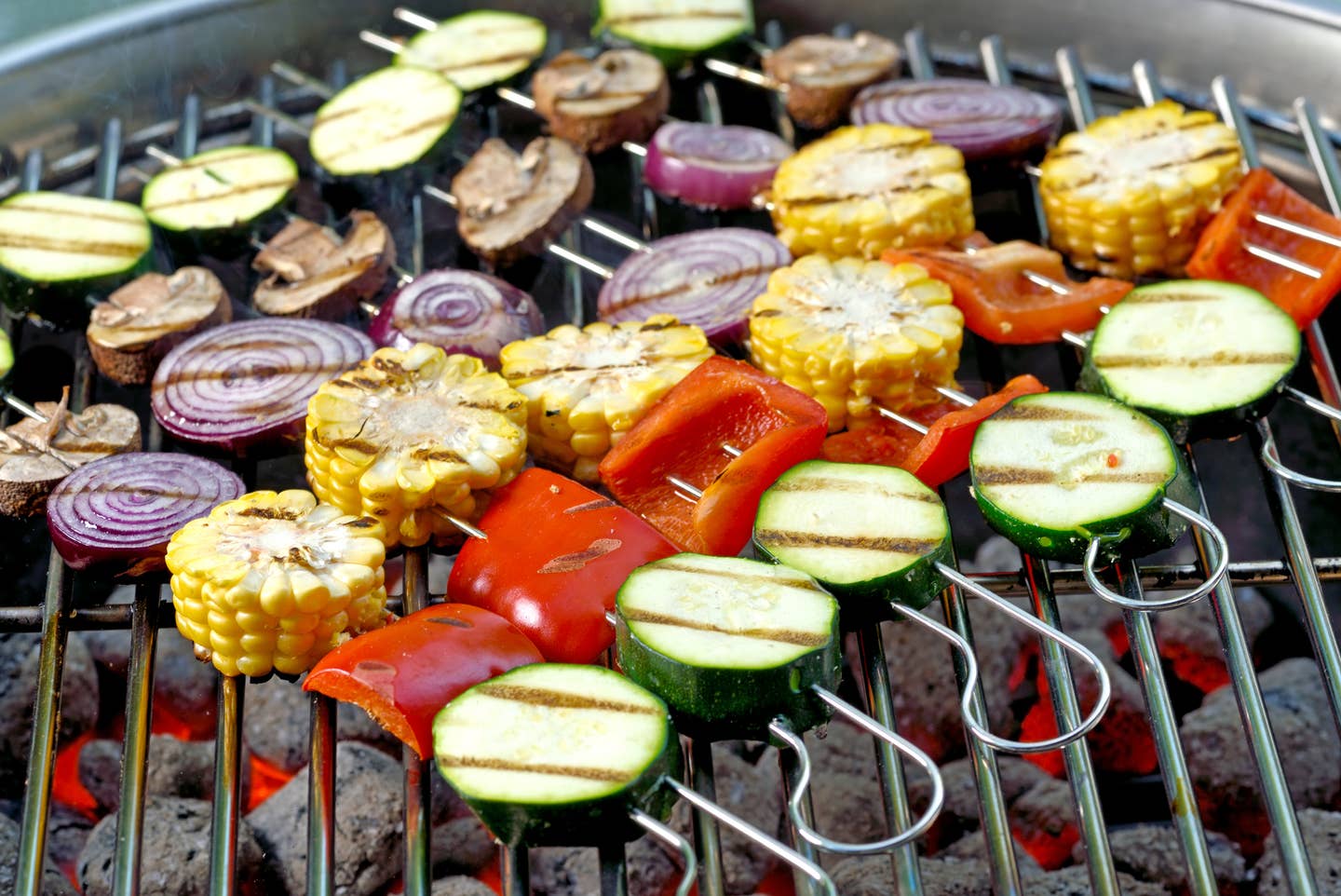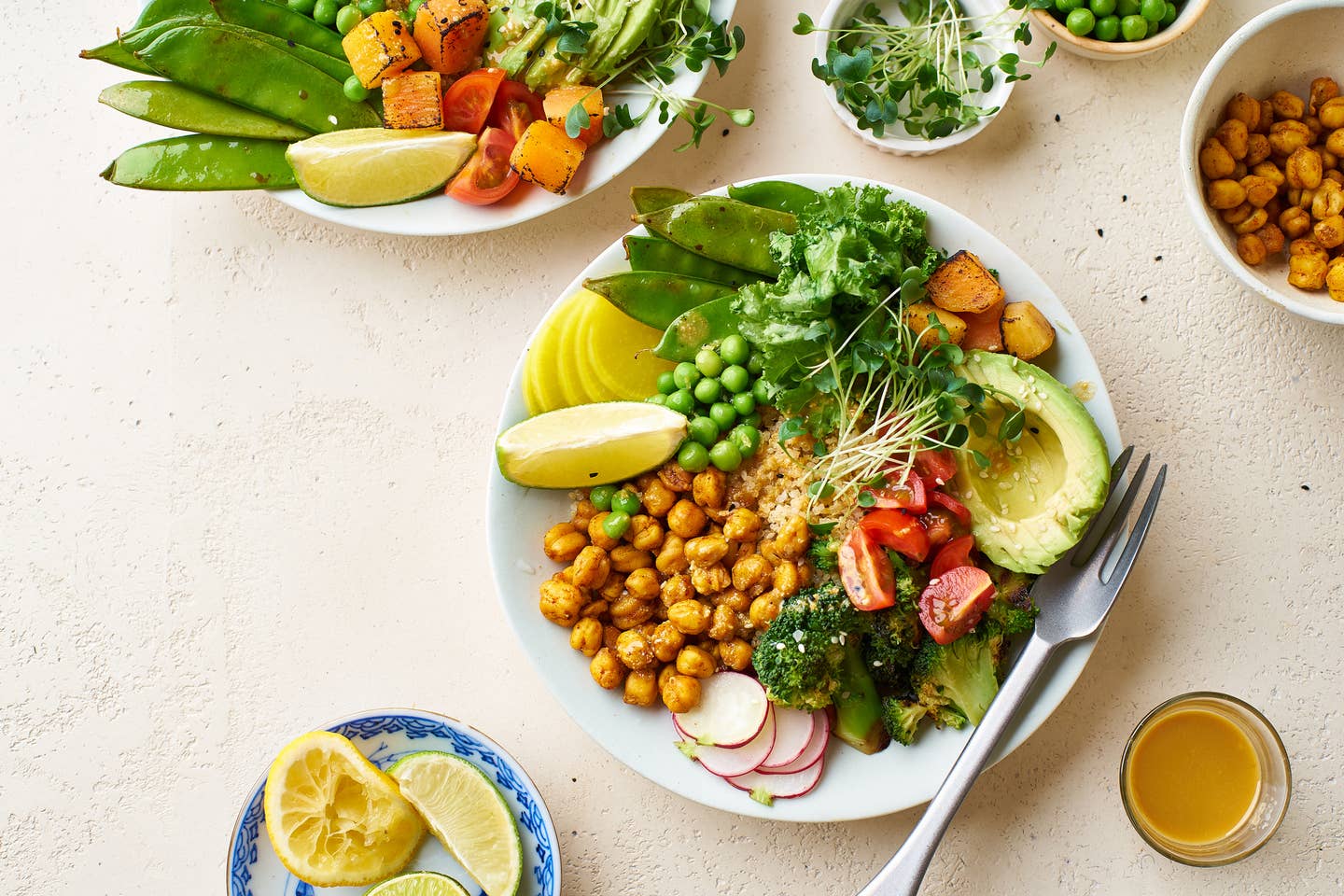
The 5 Best Ways to Grill Vegetables, According to Chefs
This summer, we’re certainly not having the backyard soirées we’ve cherished in seasons past. But that doesn’t mean you can’t throw the tarp off your grill and get cooking. Whether for a July 4th plant-based feast or a quick side dish with a weeknight meal, knowing your way around the grill with veggies should raise your game. (And those lonely Beyond Burger dinners will thank you for the company). Below, chefs share their best tips for grilling veggies. We hope you’re as hungry as we are.
1. Slice your veggies medium-thin.
No matter what kind of veggie you’re looking to cook up this summer, take care to slice them about a ½-inch thick or so. “Slice them to expose the most amount to the surface of the grill.
This will allow the heat through the entire vegetable,” suggests Andy LaPointe, head recipe creator of Traverse Bay Farms. “This is especially important for onions, eggplant, and zucchini,” LaPointe notes, adding that you should always cut them in strips if you plan on grilling them. Before cooking, you may also want to marinate your veggies in olive oil and a spice mix of your choice, as this will help prevent them from drying out while cooking, he adds.
2. Set your grill to medium-high.
“Vegetables taste great when they're fire-kissed and a little charred,” says Amber Stott, founder and Chief Food Genius at Food Literacy Center in Sacramento. We agree. “I like to set my grill at medium-high and [grill vegetables] whole, turning them to grill each side until they're slightly blackened, about two-to-three minutes on each side.” Once you’ve already got the grill fired up, we hear these sesame and ginger rice skewers with spicy peanut sauce pair really well with your summer produce bounty.
3. Forget roasted cauliflower, grill it instead.
Look, we love roasted cauliflower too, but this summer it may be time to befriend its grilled dinnertime companion, too. “Cauliflower is a household favorite of ours, but instead of cutting it into pieces, I toss the whole head in the simple marinade, season liberally with salt then place the whole head on the grill more towards the edge,” explains Jason Prendergast, Executive Chef of FIG Restaurant and Fairmont Miramar Hotel & Bungalows in Santa Monica. “I let the cauliflower slowly roast on the grill for about 30 minutes just so a knife can easily pierce through.” Present the full head at the table for visual appeal and serve with some fresh lemons for squeezing atop your portion.
4. Perfect your method of grilling corn.
Here’s another genius tip from Prendergast: Before you place husked corn on the grill, pull the husk down to the base and remove all the silk off of the cob. Then, “once all the silk is removed, I pull the husk back up, soak the corn in water for 10 minutes before grilling,” he explains. “The water allows the corn to steam in the husk while also getting the charred flavor from the grill, but not on the kernels.” Got leftover grilled corn? Throw some kernels in this healthy summer salad with fresh mango and pomegranate seeds.
5. Throw some Romaine on the grill.
Kevin Templeton, the Executive Chef of barleymash and Consultant for The Smoking Gun, both located in San Diego, California, is a big fan of grilling this oft-overlooked veggie.
“One of my favorite dishes to make for any backyard cookout is grilled baby romaine,” says Templeton. “My first tip would be to cut the heads of the lettuce lengthwise, this way you don't lose any pieces between the grates. Cutting it this way also helps keep the leaves attached to the core, making it easier to rotate on the grill.” Templeton likes pouring about a half-cup each of extra virgin olive oil and balsamic vinegar divided into the crevices of four heads of baby romaine lettuce or romaine hearts. “This helps bring out the full, nutty flavor when it's time to eat,” he says. Before serving, sprinkle on about a tablespoon of herbs de Provence, and salt and pepper to taste.
More From The Beet






